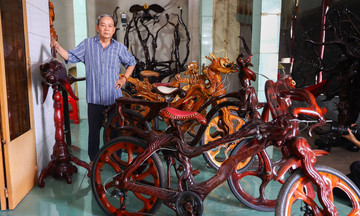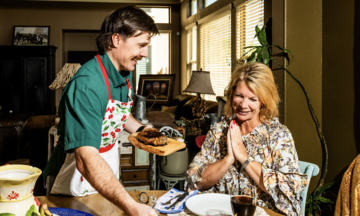Her husband's two children, aged 10 and 13, saw her as the "wicked stepmother" from fairy tales and movies. Despite Sarah preparing their meals and driving them to school, they viewed her with suspicion. Her husband's friends also kept their distance, and a teacher bluntly asked, "You must be very strict?".
Once, Sarah refused to let her 13-year-old stepdaughter go out late at night due to safety concerns. The girl told her friends that Sarah was a controlling and wicked stepmother. "I only wanted to do what was best for the children, but every action was misinterpreted," she said.
Sarah's story reflects the struggles of many American women. Over the past 50 years, the American family structure has changed significantly, with divorce and remarriage becoming increasingly common. Data from the Pew Research Center shows that 42% of Americans have at least one step-relative, 30% have half-siblings, and 30% have at least one stepchild.
The "stepmother stereotype" is believed to stem from characters in movies and fairy tales. A study analyzing 40 English-language films and TV shows featuring stepmothers found that two-thirds reinforced negative stereotypes, often portraying them as domineering, strict, indifferent, cold, manipulative, or even cruel.
The study "Overcoming the Cinderella Myth" by marriage and family psychology professor Jason B. Whiting of Texas State University found that stepmother stereotypes impact the expectations and thinking of all family members, including stepmothers themselves.
A survey of 800 single mothers revealed that 43% were hesitant to date for fear of being labeled a "wicked stepmother," and 37% feared being perceived as such. Nearly 80% believed this fear originated in childhood from exposure to movies and TV shows perpetuating the stereotype.
Dr. Harriet Fletcher, a lecturer in Media and Television at Anglia Ruskin University, Cambridge (UK), suggests the wicked stepmother image dates back to Roman times, with many familiar stereotypes originating from 19th-century fairy tales. She notes that despite being fictional, these portrayals have real-world consequences, influencing perceptions and creating challenges for women entering blended families.
Last year, 41-year-old Lisa from New York became a stepmother to 12-year-old Sophie. She initiated activities like watching animated movies and baking cookies on weekends, hoping to connect with her stepdaughter.
However, Sophie often acted coldly, calling Lisa "stepmother" with a negative tone. Whenever Lisa asked about school, Sophie remained silent or gave brief replies.
Once, when Lisa suggested Sophie dedicate an hour each evening to studying before using her phone, Sophie reacted angrily. "You're not my mother, so stop pretending to care," she said. The response left Lisa heartbroken and feeling like she would "never belong in this family."
Dr. Wednesday Martin, author of "Stepmonster" and an expert on blended families, suggests stepmothers should understand the "Cinderella effect," where children often distrust or resist stepmothers due to ingrained stereotypes.
She emphasizes that stepmothers should not blame themselves when facing difficulties, as the prejudice stems from societal biases, not personal flaws. Instead, they should focus on building positive relationships.
Martin suggests wives discuss with their husbands to establish shared responsibilities and boundaries. If a stepmother sets rules about study time or device usage, the husband should support and explain them to the children to avoid misinterpretations of the stepmother being controlling. This unity helps prevent children from exploiting disagreements between parents and stepparents to resist authority.
Ngoc Ngan (According to Daily Mail, Psychology Today)












